Abstract
This study was designed to compare the clinical and cardiological features of endomyocardial disease in temperate and tropical regions. Eleven patients were studied in the U.K., 47 in India and 8 in Brazil. The patients in the U.K. were older, with a male predominance, and they had a systemic illness: the hypereosinophilic syndrome. Half of these patients presented in the early necrotic stage of the disease, and all had biventricular involvement. On the other hand, patients in the tropical countries were younger, with an equal sex incidence, and were from poor, malnourished communities with heavy parasite loads, especially filariasis in India. None presented in the early necrotic stage of the disease and a quarter had isolated right or left ventricular disease. In order to account for these differences between patients in temperate and tropical regions with endomyocardial disease, it was proposed that the nature of the underlying disease and the rate at which endomyocardial lesions develop, determine the clinical features of this disorder. In temperate climates eosinophil granule toxins may produce a rapidly progressive form of the disease in patients with the hypereosinophilic syndrome, whereas the disease may take longer to develop in patients in tropical climates, who have a less marked eosinophilia due to parasitic infections.
Full text
PDF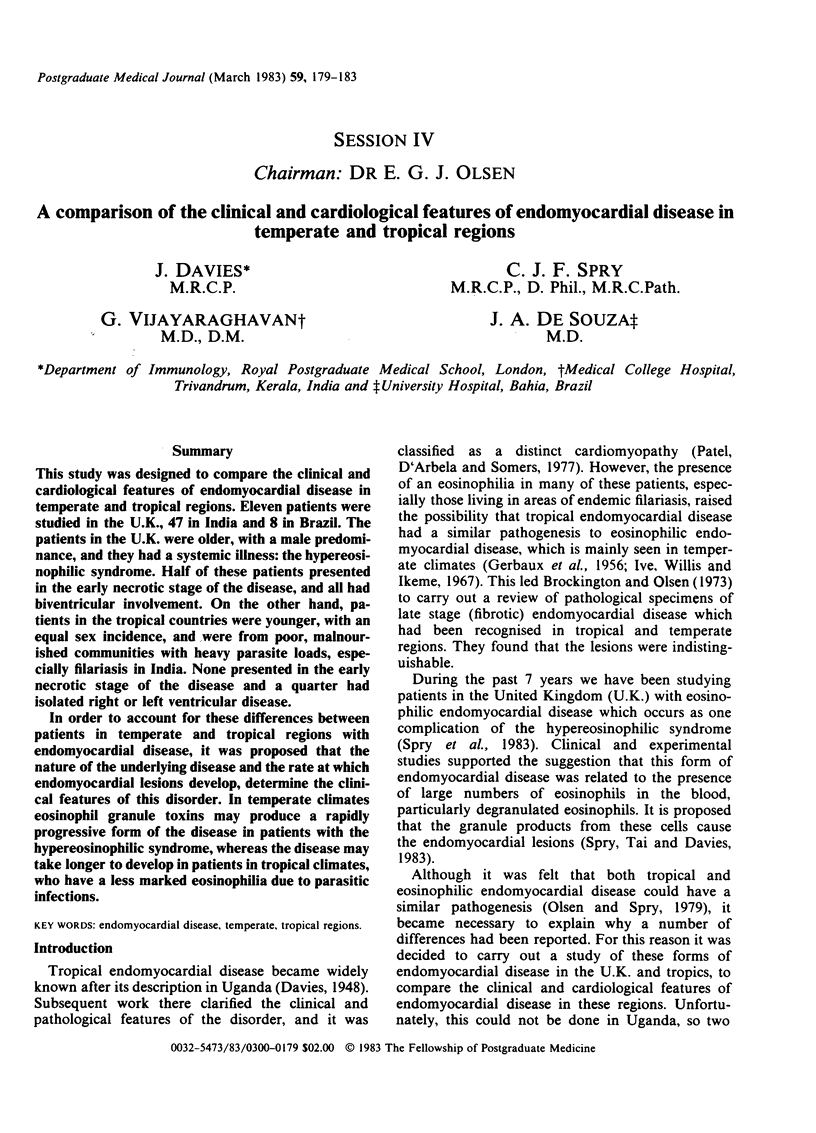
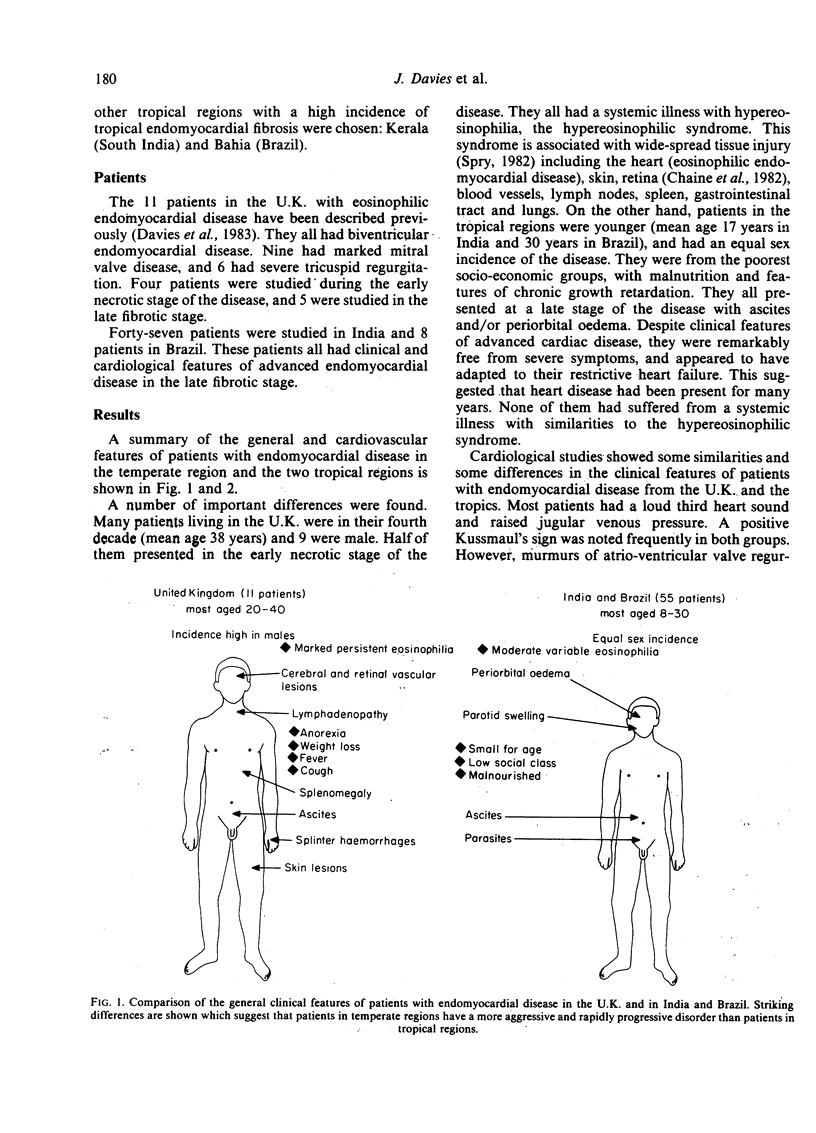
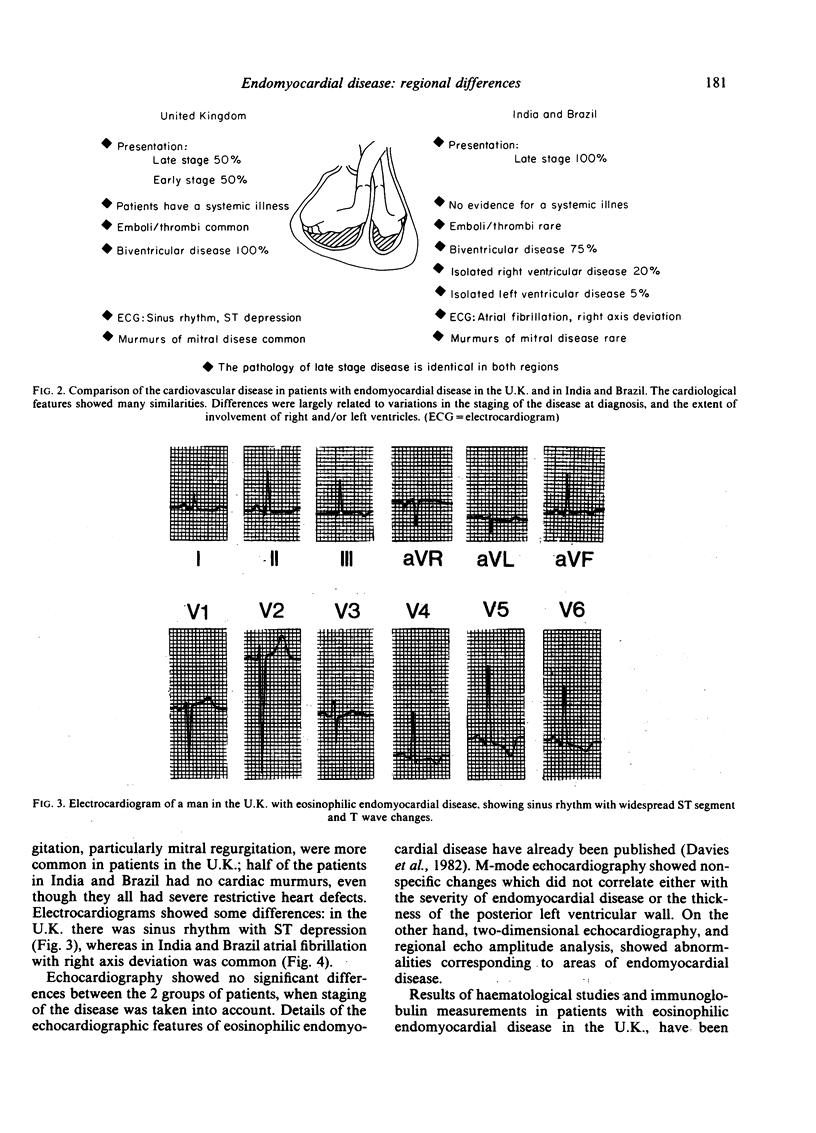
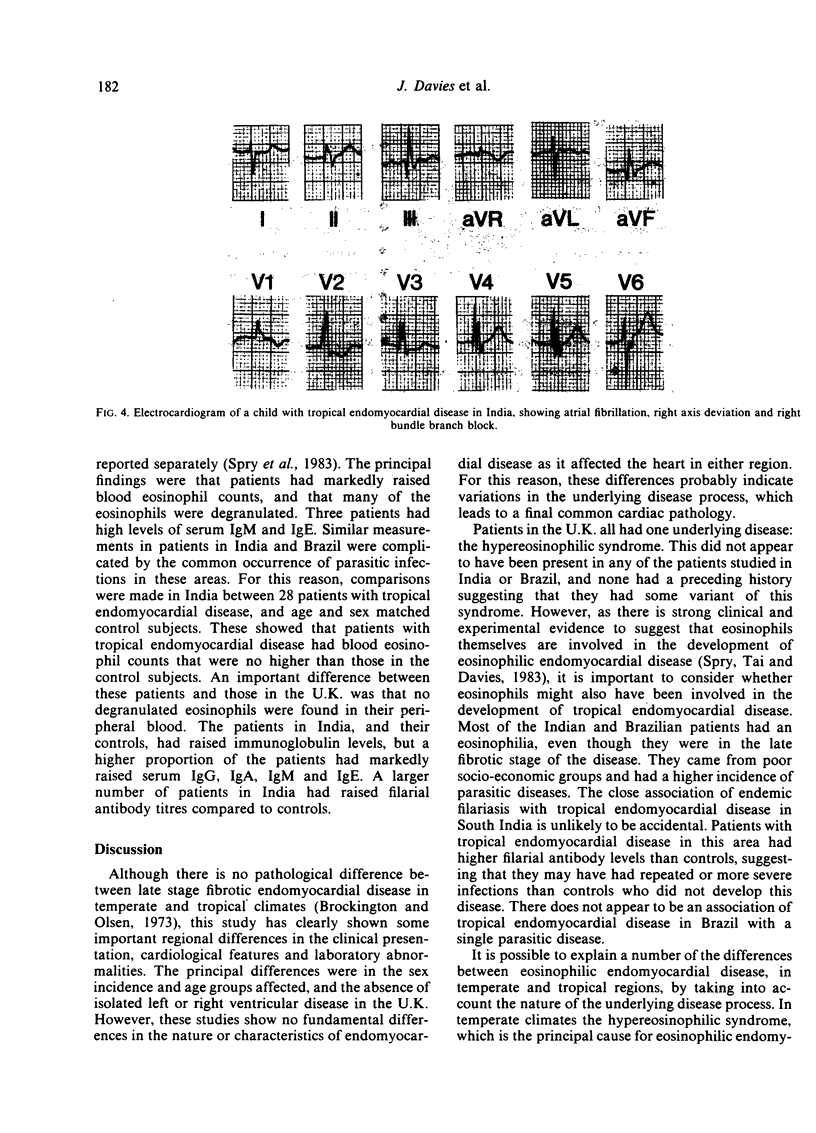
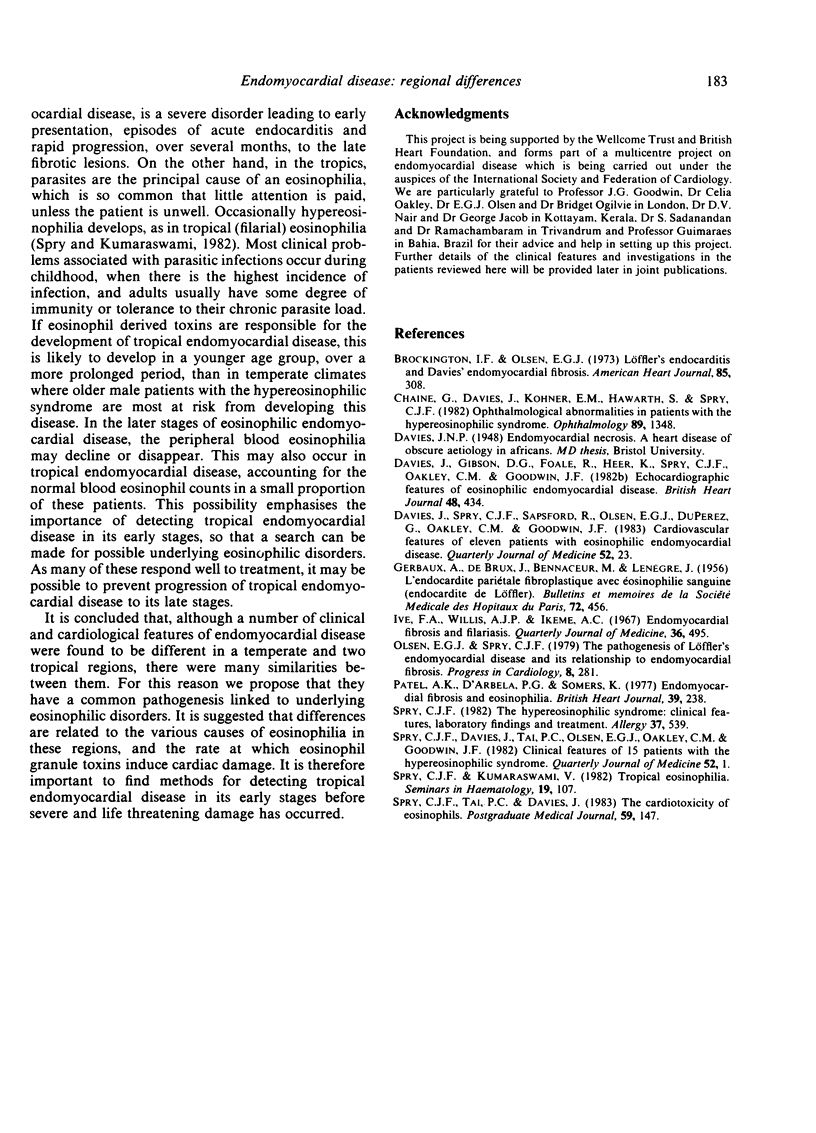
Selected References
These references are in PubMed. This may not be the complete list of references from this article.
- Chaine G., Davies J., Kohner E. M., Hawarth S., Spry C. J. Ophthalmologic abnormalities in the hypereosinophilic syndrome. Ophthalmology. 1982 Dec;89(12):1348–1356. doi: 10.1016/s0161-6420(82)34625-4. [DOI] [PubMed] [Google Scholar]
- Davies J., Gibson D. G., Foale R., Heer K., Spry C. J., Oakley C. M., Goodwin J. F. Echocardiographic features of eosinophilic endomyocardial disease. Br Heart J. 1982 Nov;48(5):434–440. doi: 10.1136/hrt.48.5.434. [DOI] [PMC free article] [PubMed] [Google Scholar]
- Davies J., Spry C. J., Sapsford R., Olsen E. G., de Perez G., Oakley C. M., Goodwin J. F. Cardiovascular features of 11 patients with eosinophilic endomyocardial disease. Q J Med. 1983 Winter;52(205):23–39. [PubMed] [Google Scholar]
- GERBAUX A., DE BRUX J., BENNACEUR M., LENEGRE J. L'endocardite pariétale fibroplastique avec éosinophilie sanguine [endocardite de Loeffler]. Bull Mem Soc Med Hop Paris. 1956;72(14-15):456–466. [PubMed] [Google Scholar]
- Ive F. A., Willis A. J., Ikeme A. C., Brockington I. F. Endomyocardial fibrosis and filariasis. Q J Med. 1967 Oct;36(144):495–516. [PubMed] [Google Scholar]
- Patel A. K., D'Arbela P. G., Somers K. Endomyocardial fibrosis and eosinophilia. Br Heart J. 1977 Mar;39(3):238–241. doi: 10.1136/hrt.39.3.238. [DOI] [PMC free article] [PubMed] [Google Scholar]
- Spry C. J., Davies J., Tai P. C., Olsen E. G., Oakley C. M., Goodwin J. F. Clinical features of fifteen patients with the hypereosinophilic syndrome. Q J Med. 1983 Winter;52(205):1–22. [PubMed] [Google Scholar]
- Spry C. J., Kumaraswami V. Tropical eosinophilia. Semin Hematol. 1982 Apr;19(2):107–115. [PubMed] [Google Scholar]
- Spry C. J., Tai P. C., Davies J. The cardiotoxicity of eosinophils. Postgrad Med J. 1983 Mar;59(689):147–153. doi: 10.1136/pgmj.59.689.147. [DOI] [PMC free article] [PubMed] [Google Scholar]
- Spry C. J. The hypereosinophilic syndrome: clinical features, laboratory findings and treatment. Allergy. 1982 Nov;37(8):539–551. doi: 10.1111/j.1398-9995.1982.tb02339.x. [DOI] [PubMed] [Google Scholar]


